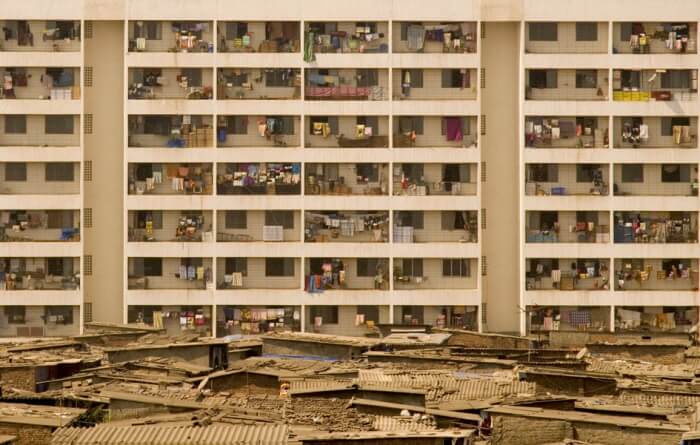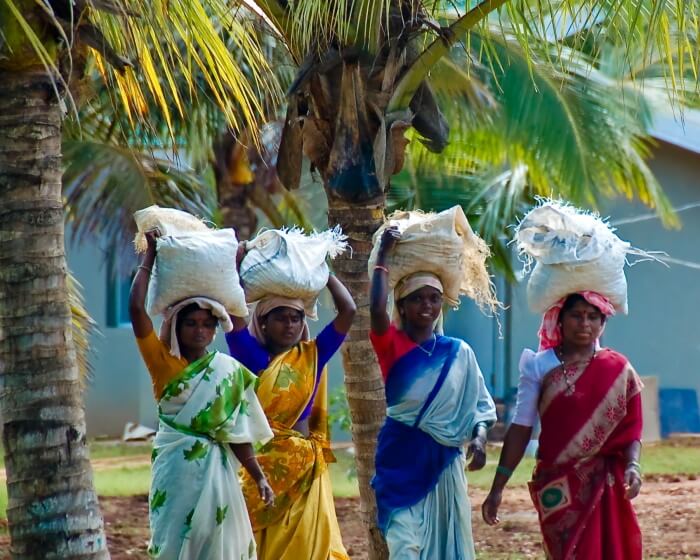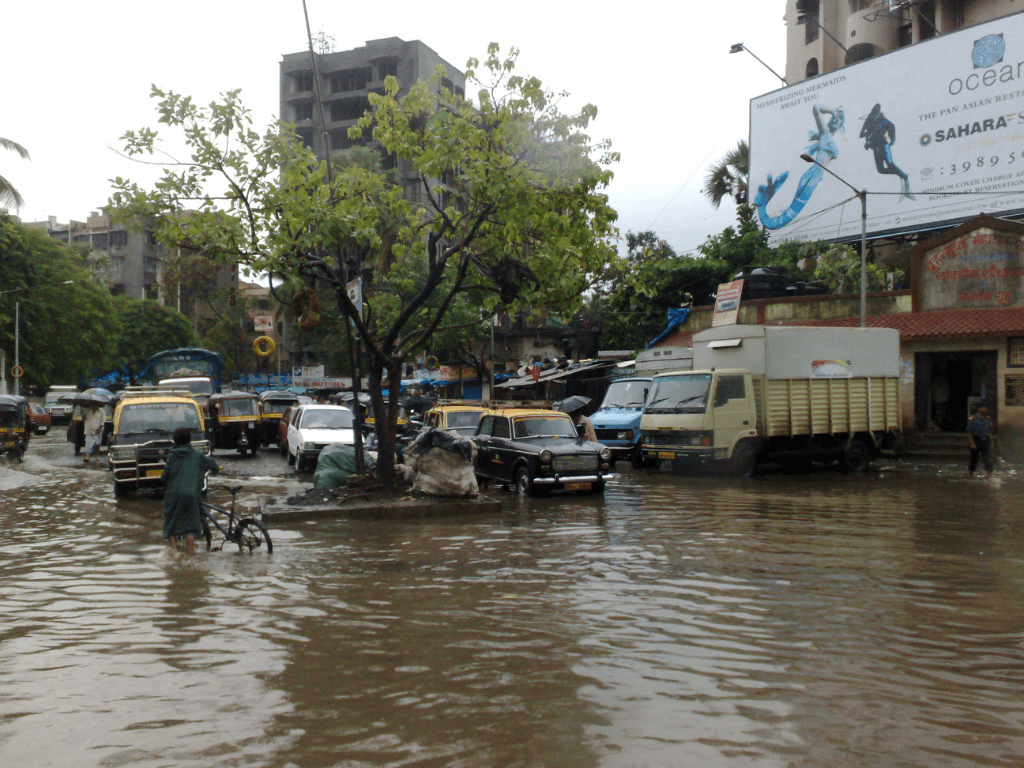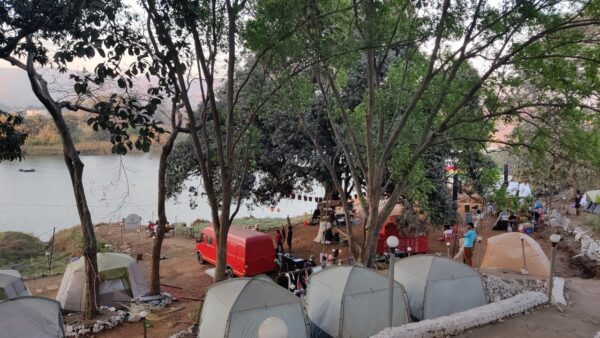As cities in India continue to face the effects of Climate Change, it has become imperative for them to chalk out climate action plans to both face the adverse climate-related events and dovetail into the commitments that the Government of India makes at international level such as the recently-concluded Conference of Parties (COP27).
Earlier this year, Mumbai released its Climate Action Plan which projected a 30-year roadmap to address the challenges of Climate Change and predictably adopted mitigation and adaptation strategies. The purpose is to make Mumbai climate-resilient; the Plan set short, medium, and long-term climate goals to achieve zero emission of greenhouse gases (GHG) or a net-zero target for 2050.
The Mumbai Climate Action Plan was guided by, among other organisations, the C40 network of 97 cities around the world and focused on addressing Climate Change. Delhi got its state action plan on climate issues earlier this year too. As other cities begin drawing up their plans to combat the impact of Climate Change, all eyes are on Mumbai for its implementation.
Shruti Narayan, C40 Regional Director for South and West Asia, with more than 20 years of experience in multilateral and global institutions on energy efficiency and sustainability, speaks about the implementation of the Mumbai Climate Action Plan, what cities should focus on as they chart out their climate action plans, and how climate financing may pan out.

Photo: C40.org
Mumbai’s Climate Action Plan made waves earlier this year and earned some criticism too. How has it helped address the impact of Climate Change considering the smog in the city last few weeks?
The air quality is an outcome of intersectionality of various aspects such as transport, energy transition, and solid waste management. It is important to look at the systemic ways to address it. Cities do take immediate measures such as closing schools, and promoting public transportation, but long-term measures are needed.
Mumbai’s Climate Action Plan (MCAP) clearly lays out a sectoral focus on different areas such as transport, energy, and waste. It charts out a data-driven approach to how the city needs to take action in some of these sectors. Mumbai has started working on it; it has a policy on electric vehicles. Ten per cent of new vehicles have to be electric. The city is also promoting electrification of public transportation. So, there’s work happening to improve the city’s air quality.
The systemic change in air quality will take time. There are two ways to address it — one is long-term systemic measures to improve the air quality which Mumbai has already started taking. The short-term measures, or responsive measures, which cities look at such as promoting public transportation to alleviate quickly and address the poor air quality.
Citizens also have a role to play. When the air quality dips, what kind of call to action do we have? Do people switch to taking the public transport?
What, in your view, are the challenges in implementing the MCAP? How is it expected to work at the local or ground level?
Mumbai is one of the first cities in the region which drafted a Paris Agreement-aligned Climate Action Plan which is data-driven, scientific, and evidence-based. It took into account a robust greenhouse inventory that was able to show the city what kind of footprint it has in emissions.
Considering the complexity of the city’s region, getting access to quality data was not easy. The process of developing a greenhouse gas inventory was a learning process for the city. During this, primarily led by the World Resources Institute (WRI) and C40, there were several engagements with stakeholders not only at the city level and state level, but also at the national level. Today, Mumbai is better placed to understand what a Climate Action Plan is.
In addressing Climate Change, cities have to set out targets for mitigation; to achieve these targets, it has to develop pathways and look at modelling projects and therefore decide actions. The MCAP has already done that for Mumbai. The challenge is the process of implementation. I wouldn’t call it a challenge really but there’s a need to develop frameworks of implementation. Besides the framework, there has to be a consciousness-driven collaboration between the state and Centre. There are many frameworks and roles that are required at the macro and micro level, and the intent is to work in collaboration and partnerships with the government, non-governmental organisations (NGOs), and the community social organisations (CSOs).
Mumbai also needs to look at alignment of projects and policies, and requires some policy influencing such as what kind of incentives or support systems can the city give to green buildings and so on. Cities are economic centres and there are many stakeholders who form the city and have a role to play in the Climate Action Plan. It’s important for stakeholders to come forward in a cohesive manner to implement some of the measures. I would encourage platforms like Question of Cities to highlight the way cities are paving a path for climate action.
A significant proportion of greenhouse gas (GHG) emissions come from buildings and we know there is a lot of private sector involvement in this sector. There has to be clarity on what kind of engagements and commitments can happen for the private sector to facilitate the delivery of some of these measures. The transition that’s aimed for through the Climate Action Plan is a green economic recovery and addressing the vulnerable population in the city.

Photo: ImageManHunter/ Creative Commons
How does the MCAP actually help the vulnerable millions facing climate events such as heat waves and floods? What does it have for the person on the street?
It is important that climate action plans are built on economic recovery and just transition. All our climate action plans look at how vulnerable population is being addressed. It is important to be able to outline that if we don’t forecast and foresee the climate risks that the city faces, it will be unable to model the way the vulnerable population will be impacted.
Secondly, even without the risk as we stand today, these climate action plans provide a framework for looking at how the whole mainstream of climate in cities can happen in a just way, which is very very critical.
Taking off from COP27, what should cities in India focus on?
One of the important thematic areas that have come out from all the discussions on Climate Change and action is around resilience. The climate action plans are not only about mitigation, there is a balance between mitigation and adaptation which is integral to all climate action plans. In the MCAP, there is also the component of risk assessment. Cities are supported to look at the potential risks, especially extreme heat and urban flooding, of possible climate events.
When cities draw up plans, they should focus on resilience and adaptation, and how these are integrated into the mainstream of climate action policy. We should start looking at the frameworks to address Climate Change, for example the warning mechanism in case of intense heat waves so people know what to expect and can prepare. Health, public health, is becoming paramount as a result of Climate Change. It is important for cities to look at all these systems and make their climate action plans so that the vulnerabilities, whatever they may be in a city, are addressed in a systemic way.
The NAPCC or loosely called the National Climate Action Plan was put in place in 2008 and strengthened in 2015 by launching a dedicated fund – National Adaptation Fund on Climate Change (NAFCC). Have the Plan and the Fund achieved their purpose?
I don’t think I can comment on this. But the Ministry of Environment, Forest and Climate Change (MOEFCC) is working on this very complex issue of Climate Change. There is a framework for states to undertake a state action plan for Climate Change. All the states are working on that. I think this is an important trigger for the states to understand what kind of climate emissions and climate impact they have. There is a consistent review. In addition to this, state governments are also engaging with state pollution control boards. The Centre is providing significant funding to cities for projects.

Photo: Phil Price/ Creative Commons
How do you see the issue of funding climate action in cities by local governments? Has the lack of funds affected planning and action for mitigation and adaptation?
It’s not really the lack of financing that is holding up climate action as there is a lot of commitment on climate finance, and it is increasing. Cities need to look at their technical capacity to structure projects which qualify for the climate finance available. If you keep doing pilot or demonstration projects, you can never have the paradigm shift on mainstreaming climate action, which requires that the projects that the city wants to do become bankable.
The lens of Climate Change should be applied to every project that every city undertakes. It’s important for cities in general to not look at climate separately from other aspects of projects. Every rupee that the city spends now has to have a climate lens, this is critical. Questions must be asked such as is this creating resilience, what is the impact on mitigation, and so on.
I can say that C40 has a finance facility to support cities in project preparation. In collaboration with the city of Oslo, we are also working on a pilot called ‘climate budgeting project’. And Mumbai is involved in this. The project is mainly for cities to mainstream budgeting in a way that climate concerns are mainstreamed into municipal budgeting.
Since women and girls, the poor and other marginalised groups are among those worst impacted by Climate Change events, are there specific areas that climate action plans should address so that all sections of society are covered?
Every climate action plan that we work on has to be inclusive, not only women and children but all vulnerable groups in the city. The Mumbai Climate Action Plan also addresses that. We are working with Chennai and other cities too and the endeavour is to ensure that no one is left behind.
The vulnerable populations are not only included in the risk perspective but attention is also paid to how the policy or benefits frameworks are created so that the impact they may potentially face can be mitigated. The other part of this is job creation. Here it is important to bring the lens on migration. We see human mobility or migration happening because of climate-related issues or climate weather events. How to create support systems for this movement is an important issue. There are projections that nearly 50 to 300 million people across the world will move till 2050 because of Climate Change impact. We are already seeing that. It’s important to bring in this aspect of mobility into the climate discussions and plans, and find ways to address that.
India has announced adopting an environment-friendly lifestyle, ‘LiFE’ (Lifestyle for Environment), to combat Climate Change. What are your views on this and how can this be implemented?
Individuals make a city. Nothing can change on climate issue if people don’t align with the government on this because people alone cannot avert or face the climate events. Governments can roll out policies to combat Climate Change and cities can make plans, but if we as people do not subscribe to them then nothing can change.
Consumption-based emissions are among the biggest contributors to Climate Change. People need to be conscious about their consumption. Do they even bat an eyelid if they are wasting food, do individuals compost waste which is more significant that using a car, do we take public transport over private? These and similar other choices ultimately impact all of us. A sustainable lifestyle and the call to action are the building blocks of anything you want to do to address Climate Change.
Cover photo: Michael Kohli/Creative Commons




